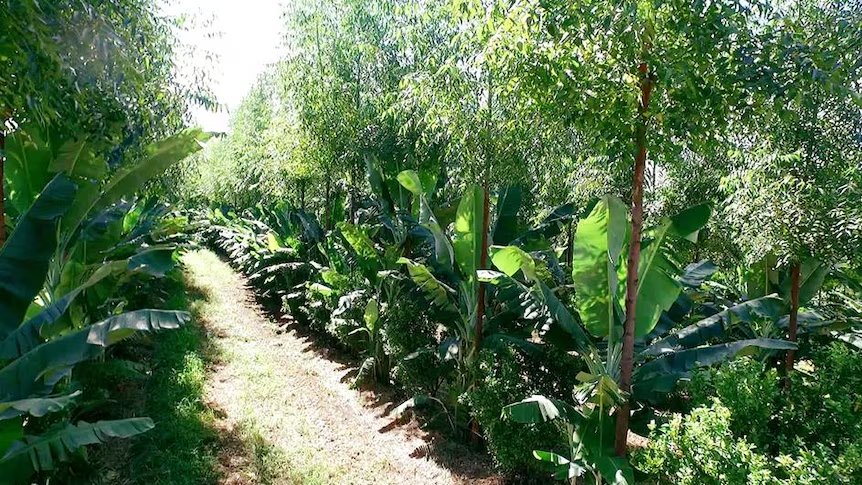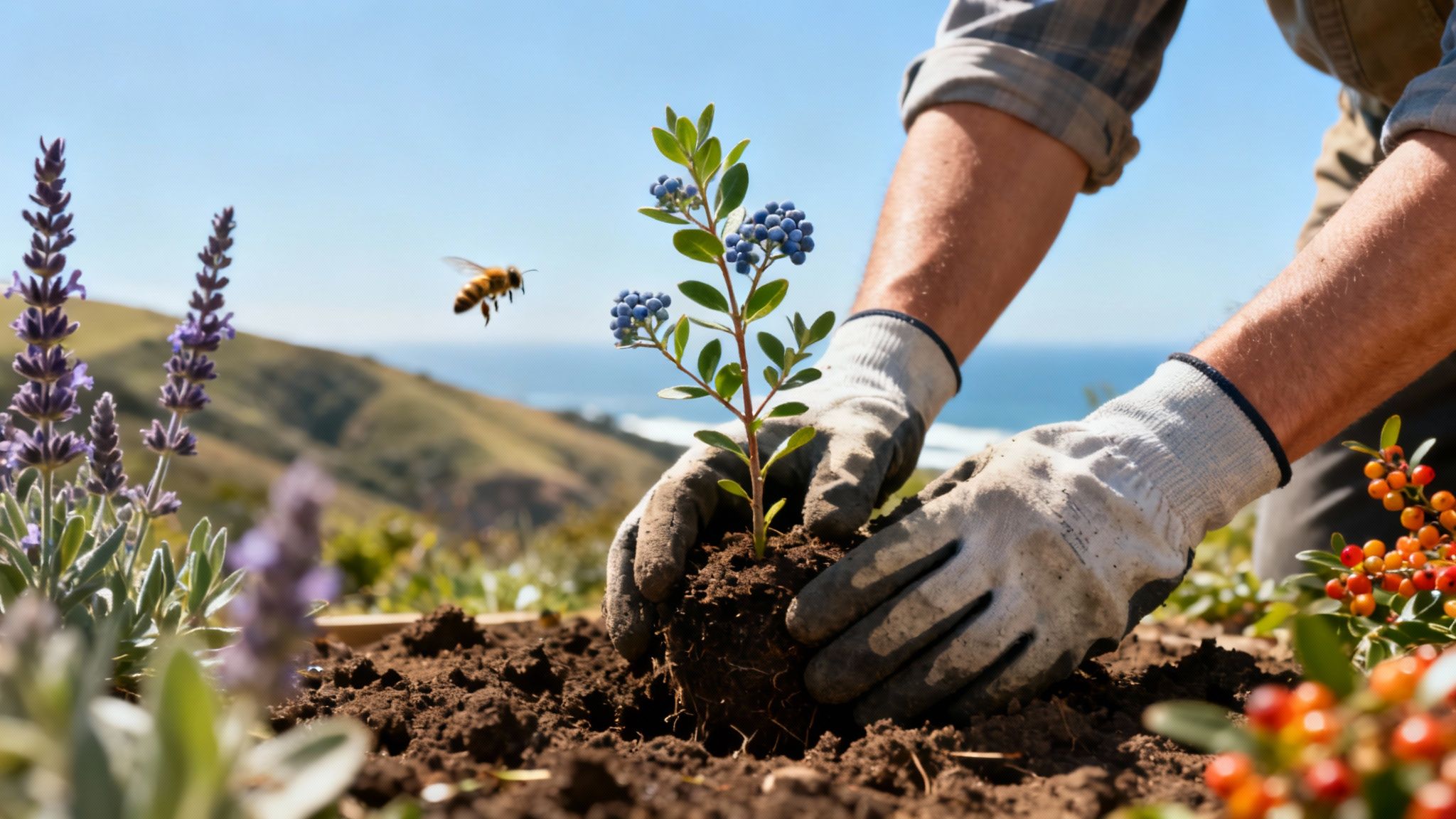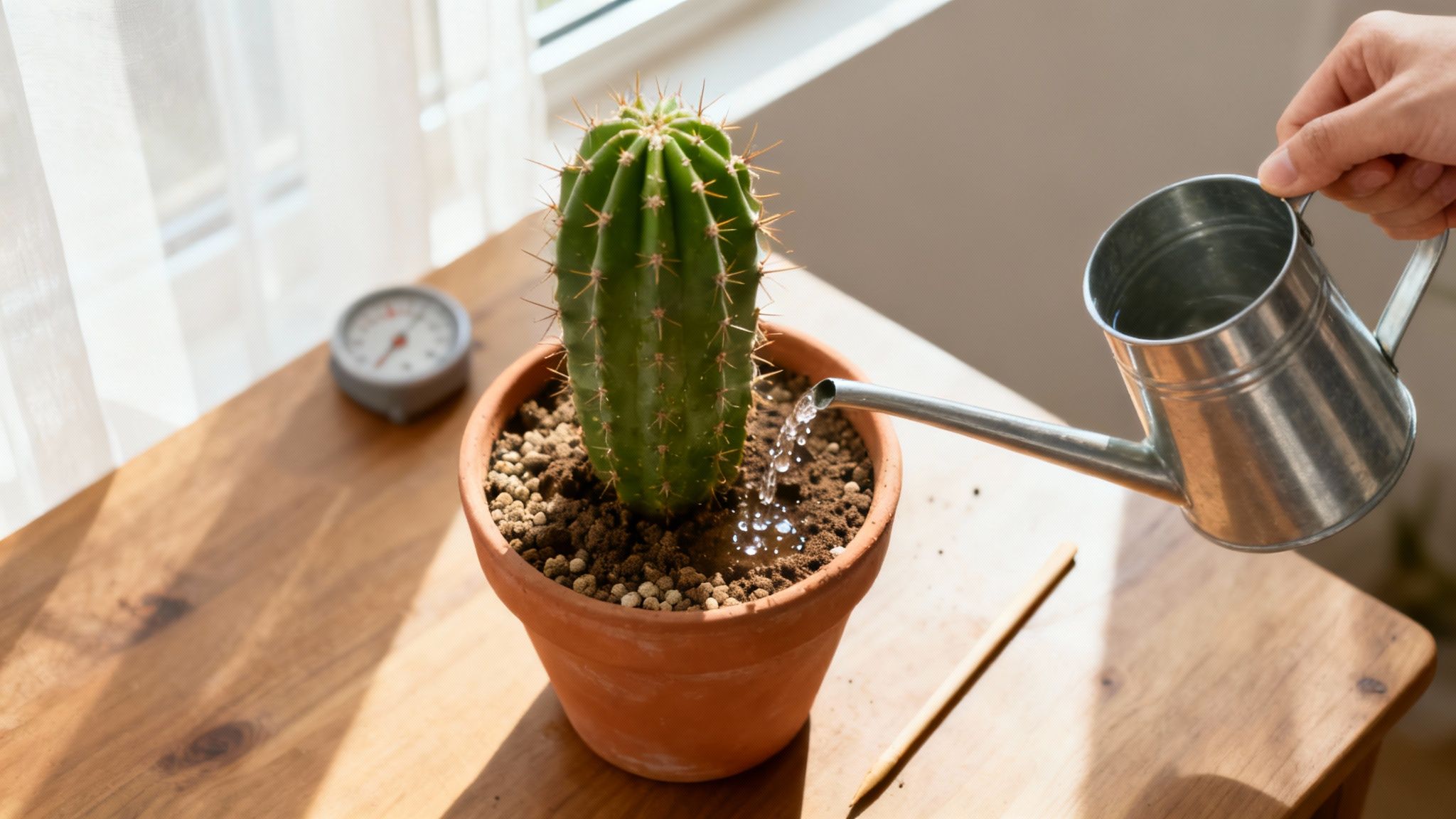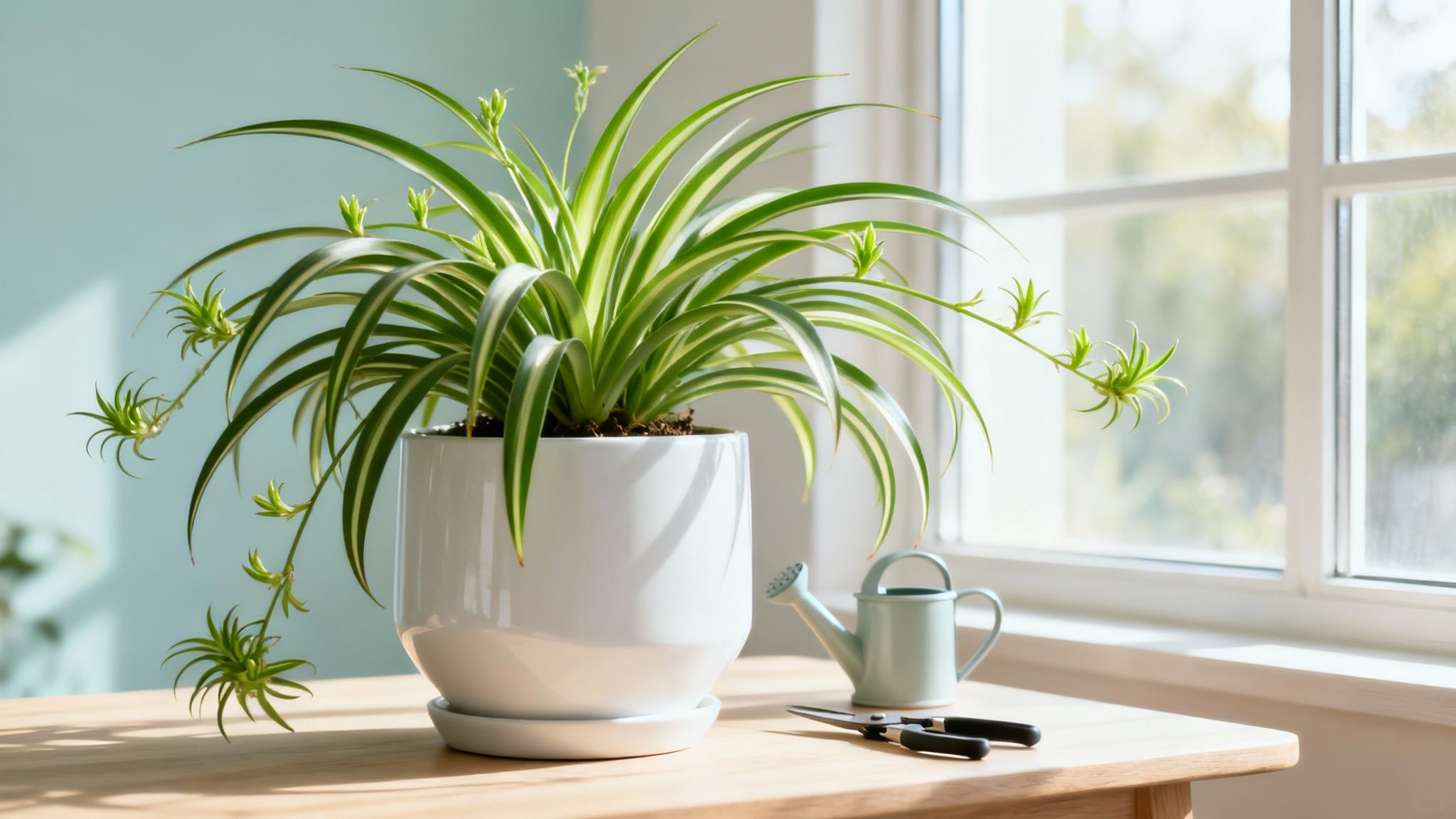Ever feel like you're in a constant battle with your garden? The endless cycle of weeding, watering, and fighting pests can be exhausting. But what if you could create a garden that works with nature, not against it? A space that builds its own soil, attracts beneficial insects, and yields an incredible harvest with less effort. That's the promise of agroforestry, an approach that helps you design a self-sustaining 'food forest' by mimicking a thriving, natural ecosystem. It's a game-changing perspective that can transform any backyard into a resilient, productive paradise.
Your Garden Can Be A Thriving Ecosystem
If you're tired of planting in neat, vulnerable rows that demand constant attention, you're not alone. The good news is, there's a smarter, more harmonious way to grow. Instead of fighting nature, agroforestry teaches us how to create layered, interconnected plant communities that practically take care of themselves.
This isn't a new trend. It's an ancient practice refined by modern pioneers like Ernst Götsch and Geoff Lawton, visionaries who have turned barren land into lush, food-producing oases. The exciting part is that you can apply their powerful ideas in your own space, whether you have a sprawling yard or a small urban plot. We'll lay out a clear roadmap to help you turn your garden into a beautiful, resilient, and productive ecosystem. If you're brand new to gardening, our guide on how to start a garden is a perfect first step.
What Is Agroforestry and Why It Matters
Forget the image of single-crop rows stretching to the horizon. At its heart, agroforestry is the art and science of integrating trees and shrubs with crops and/or animals. You can think of it as ‘gardening in layers’ or building your own small-scale food forest, where every plant has a job and supports the whole system.
Building a Self-Sustaining Garden
In an agroforestry setup, plants work together. A tall fruit tree, like an apple (Malus domestica), provides dappled shade for delicate herbs below that would otherwise scorch in the sun. On the ground, a nitrogen-fixing cover crop like clover (Trifolium repens) pulls essential nutrients from the air and deposits them into the soil, feeding the entire plant community. This interconnected web creates a miniature ecosystem that's naturally more resilient to pests, drought, and disease. It’s a profound shift from battling nature to partnering with it.
Surprising Fact: A well-designed agroforestry system can be up to 40% more productive than a conventional monoculture system occupying the same area.
The Bigger Picture Benefits
Beyond our backyards, agroforestry is a powerful tool in the fight against climate change. By re-integrating trees into agricultural landscapes, these systems excel at carbon sequestration. Research shows these systems are fantastic at carbon sequestration, with the potential to pull in up to 2.5 gigatons of CO2 every year.
This approach doesn't just help with greenhouse gases; it boosts biodiversity and restores ecosystems. For instance, Brazil’s Sustainable Farming Initiative saw a 15% improvement in water retention on lands managed with these principles, showing how effective it can be at healing degraded land. You can dig deeper into these global impacts in this market research report.
Bringing these ideas home can feel like a big leap, but you don't have to figure it all out alone. When you’re wondering which nitrogen-fixing cover crop to pair with your new avocado tree, the shared knowledge within the Tendra app is invaluable. Connecting with local gardeners through features like Twin Plant Mates can give you proven plant combinations that thrive right in your neighborhood.
Learning From Agroforestry Pioneers
To truly grasp the power of agroforestry, it helps to look at the visionaries who brought these ideas to life. Their work isn't just theory; it's a living testament to what happens when we design gardens to work with nature's operating system, not against it. They developed entire philosophies for creating complex, self-regulating ecosystems that build soil, boost biodiversity, and produce an abundance of food.
Ernst Götsch and Syntropic Farming
One of the most important names is Ernst Götsch, a Swiss farmer who developed 'Syntropic Farming' on once-degraded land in Brazil. He views agriculture as a process of "farming in the direction of life." Instead of fighting weeds, Götsch works to accelerate natural succession—the way an ecosystem evolves over time. He strategically prunes plants not just for health, but to drop the cuttings right onto the ground to feed the soil microbiome. It's a brilliant closed-loop system where "waste" becomes a valuable resource, creating farms that are complex jungles of productivity.
"Our role is not to fight nature but to facilitate its processes. We are choreographers of life, creating the conditions for abundance to emerge naturally." - A core principle inspired by Ernst Götsch's philosophy.
Geoff Lawton and Practical Permaculture
While Götsch transformed the Brazilian landscape, Australian permaculture expert Geoff Lawton made these regenerative principles accessible to gardeners and small-scale farmers worldwide. Lawton is a master of practical, boots-on-the-ground design, teaching people how to read their land and create systems that cleverly mimic natural patterns. His core message is one of empowerment: anyone, anywhere, can use thoughtful design to create productive gardens that heal the environment.
The chart below drives home the dramatic difference between these regenerative methods and conventional farming.

As you can see, syntropic systems don't just perform a little better—they dramatically outperform conventional methods in building soil, boosting biodiversity, and increasing yields over time.
Bringing Pioneer Principles to Your Garden
The work of Götsch and Lawton provides a blueprint for leaving behind high-labor gardening and creating resilient ecosystems. You don't need a huge plot of land to start. These ideas scale down beautifully.
Observe First: Before you dig, just watch. See how sun, shade, and water move through your space. Let the land tell you what it needs.
Work with Nature: Instead of fighting pests with sprays, plant species that attract beneficial insects that prey on them. Think of it as hiring a tiny, free security force for your garden.
Build Your Soil: Use the "chop and drop" method with powerhouse plants like comfrey (Symphytum officinale). You're growing your own fertilizer right where you need it.
Taking these first steps is always easier with a community. In the Tendra app, you can connect with other local gardeners who are also building food forests. It’s a place to share wins, troubleshoot challenges, and even swap plants through the marketplace, making these big ideas work right in your own backyard.
Popular Agroforestry Systems for Your Garden
You don’t need a sprawling farm to bring the power of agroforestry into your life. These concepts scale down beautifully, transforming even a small backyard into a productive, layered ecosystem. Let's dig into three popular systems you can adapt for your own garden.
Alley Cropping: Maximizing Sun and Space
Imagine rows of your favorite vegetables growing happily between protective rows of trees or shrubs. That's alley cropping. It’s a clever design that gives your sun-loving annuals all the light they need while the taller perennials create beneficial microclimates, acting as windbreaks and building soil with their fallen leaves. In a home garden, this could be a row of raspberry bushes (Rubus idaeus) alongside a bed of lettuce and herbs.
Silvopasture for Smaller Scales
While traditional silvopasture involves livestock grazing under trees, you can adapt this for a backyard. Think smaller. Integrating animals like chickens into a garden orchard is a perfect example. Chickens are fantastic helpers, scratching for pests like slugs and snails while naturally tilling and fertilizing the soil. It’s a beautiful, closed-loop system where animals support plants, and plants provide shelter and food for the animals.
The Multi-Story Food Forest
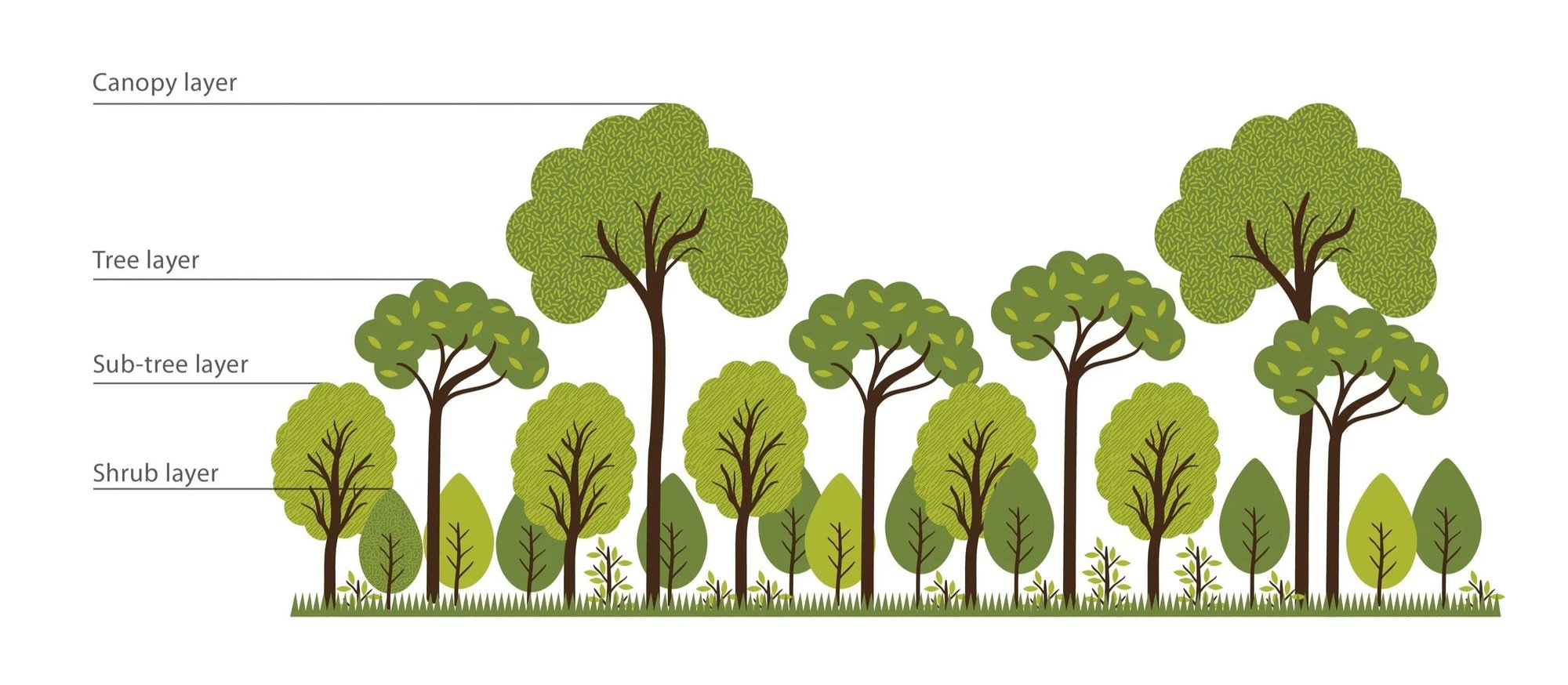
The multi-story food forest is the classic agroforestry model and the most exciting one for a home gardener. This system is all about stacking plants in vertical layers to mimic a natural forest, packing incredible productivity into a small footprint. A simple "guild" could feature a dwarf apple tree (Malus domestica) as the canopy, a blueberry shrub (Vaccinium corymbosum) beneath it, and a living mulch of strawberries (Fragaria × ananassa) covering the ground. The result is a self-supporting community providing multiple harvests from the same patch of soil.
You can also get more ambitious with trees like avocados; our complete avocado tree planting guide can help you start with this rewarding choice.
Comparing Agroforestry Systems for Your Garden
This table breaks down the key features of each system to help you find the best fit.
System Type | Primary Benefit | Best For... | Key Challenge |
|---|---|---|---|
Alley Cropping | Maximizes sunlight for annuals while building soil with perennials. | Gardeners who want to integrate traditional vegetable beds with long-term fruit or nut production. | Requires careful planning to avoid trees shading out annuals as they mature. |
Silvopasture | Natural pest control and fertilization from integrated small animals. | Gardeners with enough space for chickens or ducks and a desire for a low-input orchard. | Involves the added responsibility and infrastructure for keeping animals healthy and contained. |
Food Forest | Highest productivity and biodiversity in a small, vertically layered space. | Gardeners passionate about creating a complex, self-sustaining ecosystem with diverse yields. | Can take several years to fully establish and requires more upfront design knowledge. |
Ultimately, the best system is one that excites you and works with your landscape. Whether you start with a simple alley crop or dive into designing a food forest, you’re taking a step toward a more resilient and abundant garden.
Your 3-Step Guide to Starting a Food Forest
Ready to transform a patch of lawn into a thriving food forest? This is one of the most rewarding projects you can undertake. It connects you to your land in a profound way. Let's walk through it. Imagine you have a sunny, 10-foot by 20-foot (about 3m x 6m) spot you're ready to make productive.
Step 1: Get to Know Your Land
Before buying a single seed, the most important thing you can do is observe.
Become a Sun Mapper: Track the sun’s journey across your plot for a few days. Where are the sun-drenched spots perfect for a fruit tree? Where does shade settle in the afternoon?
Follow the Water: When it rains, see where water pools, rushes, or soaks in. This tells you where to plant thirsty species and how to prevent erosion.
Get Your Hands Dirty: Squeeze a handful of soil. Is it sandy, loamy, or clay? Knowing your soil type and pH is your starting point for building a healthy foundation.
Step 2: Decide What You Really Want
What do you want your garden to do for you? Having clear goals keeps you focused. Are you dreaming of:
Fresh fruit for your breakfast all summer long?
A buzzing paradise for bees and butterflies?
A constant supply of fresh culinary herbs right outside your door?
Your answer will guide your plant choices.
Step 3: Start Stacking and Choosing Plants
In agroforestry, we think in layers, just like a natural forest. This "stacking" maximizes productivity in a small space. The classic seven-layer system includes:
Canopy: Your tallest element (e.g., dwarf apple tree).
Understory: Smaller trees or large shrubs (e.g., hazelnut).
Shrub Layer: Berry bushes (e.g., currants, blueberries).
Herbaceous Layer: Non-woody plants (e.g., comfrey, rhubarb, flowers).
Groundcover: Low-growing plants to protect the soil (e.g., strawberries, thyme).
Rhizosphere: The root zone (e.g., potatoes, garlic).
Vertical Layer: Climbers and vines (e.g., grapes, hardy kiwi).
Start with an "anchor" plant—like a dwarf fruit tree—and build a supportive community, or "guild," around it.
Practical Tip: Ensure any plant you choose is a perfect match for your local climate by checking your growing zone. You can learn more in our gardener's guide to the USDA planting zone chart.
For example, if you dream of growing avocados, success hinges on finding the right variety. This is where Tendra’s Cultivar Explorer is a game-changer. You can filter through hundreds of avocado or fig varieties to find one that’s a proven performer in your specific climate zone, saving you time, money, and heartache.
This approach is making a huge difference globally. In Kenya, for example, farmers integrating trees with crops have seen yields increase by up to 40%. You can find out more about how agroforestry is benefiting farmers in Africa. As your ecosystem grows, you'll inevitably spot a weird leaf or pest. Instead of panicking, you can use Tendra's AI disease diagnosis. Just snap a photo for an instant ID and a gentle, effective treatment plan. It’s like having an expert in your pocket.
Your Garden as a Living System
Agroforestry isn't just a set of gardening techniques; it’s a shift in perspective. It’s about seeing your garden as a living, breathing, interconnected system. When you work with nature’s patterns, you create a space that is more resilient, wildly productive, and ultimately, far less work. You're not just growing plants; you're building rich soil, inviting in beneficial wildlife, and setting the stage for a dependable harvest for years to come.
This journey is a powerful experience, but you don't have to do it alone. The real magic happens when you connect with other growers walking the same path. Imagine finding solutions to your challenges and discovering the perfect plants for your food forest by tapping into the experience of local gardeners. That's where the breakthroughs happen.
Connect with local gardeners who've solved this exact problem with Tendra. Connect. Grow. Share.
